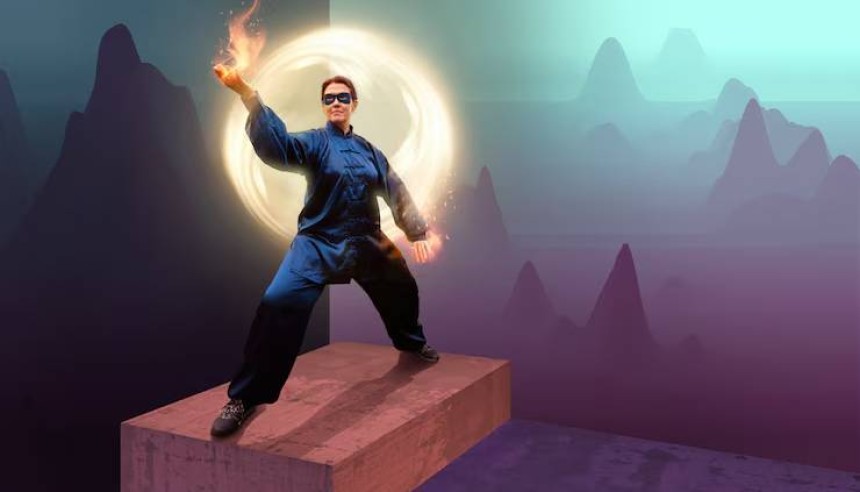
How to Achieve Cinematic Depth in 2D Animation
Creating a sense of depth in 2D animation has always been a challenging yet rewarding task for animators. While 3D animation inherently possesses the ability to depict depth due to its spatial rendering, 2D animation must rely on a combination of artistic techniques, visual tricks, and animation principles to achieve the same effect. The demand for 2D animation services has surged in recent years, as animators continue to innovate and push the boundaries of what can be accomplished in this traditional art form. One of the most effective ways to elevate 2D animation is by creating cinematic depth, giving the animation a three-dimensional feel within a two-dimensional space.
This blog will explore various techniques and principles to achieve cinematic depth in 2D animation, using examples from both classical and contemporary animations. We will delve into the importance of perspective, lighting, layering, and motion parallax, as well as how Cel animation techniques can contribute to this goal.
1. Understanding PerspectivePerspective is the foundation of creating depth in any visual art, including 2D animation. By manipulating the vanishing points and horizon lines, animators can create the illusion of three-dimensional space on a flat surface.
1.1. Linear PerspectiveLinear perspective involves creating a sense of depth through the use of converging lines that meet at a vanishing point on the horizon. In 2D animation, linear perspective is essential for scenes that involve architecture, roads, or any elements that recede into the distance. By adjusting the vanishing points, animators can control the scale and positioning of objects, making them appear closer or further away.
For example, in a scene where a character is walking down a street, the buildings and road should gradually taper towards a vanishing point, creating the illusion of depth.
1.2. Atmospheric PerspectiveAtmospheric perspective plays a significant role in conveying depth by altering the color and clarity of objects based on their distance from the viewer. In 2D animation services, animators can use atmospheric perspective to make background elements appear hazy or desaturated, while foreground elements are rendered in sharper detail and more vibrant colors. This technique mimics how the human eye perceives depth in real life, where distant objects appear less distinct due to the scattering of light in the atmosphere.
2. The Role of Lighting and ShadowsLighting is another critical element in achieving cinematic depth in 2D animation. Proper use of light and shadow not only adds realism but also enhances the three-dimensionality of the scene.
2.1. Directional LightingDirectional lighting can be used to emphasize the volume and form of characters and objects in a scene. By strategically placing light sources and casting shadows, animators can create the illusion of depth. For instance, if a character is illuminated from one side, the opposite side should be in shadow, with gradations of light and dark that suggest roundness and depth.
In Cel animation, this technique is often achieved by layering transparent cells on top of each other, each layer representing a different intensity of light and shadow.
2.2. Rim LightingRim lighting involves placing a light source behind the subject, creating a glowing outline around the edges. This technique is particularly effective in separating the character or object from the background, enhancing the sense of depth. Rim lighting is commonly used in dramatic scenes to highlight the character's silhouette, adding a cinematic flair to the animation.
3. Layering and ParallaxLayering is one of the most straightforward yet effective techniques for creating depth in 2D animation. By placing elements on different layers and moving them at varying speeds, animators can simulate the effect of parallax, where objects closer to the viewer move faster than those further away.
3.1. Foreground, Middleground, and BackgroundIn 2D animation services, scenes are often divided into three distinct layers: foreground, middleground, and background. By animating each layer independently, animators can create a dynamic sense of depth. For example, in a scene where a character is running through a forest, the trees in the foreground might move rapidly across the screen, while those in the background move more slowly, reinforcing the sense of distance.
3.2. Parallax ScrollingParallax scrolling is a technique frequently used in side-scrolling animations and video games. By moving background layers at different speeds relative to the foreground, animators can create an immersive environment that feels more expansive and three-dimensional. This technique is particularly effective in action sequences, where the sense of motion and depth is critical to the scene's impact.
4. Motion and Camera TechniquesMotion plays a vital role in achieving cinematic depth in 2D animation. The way characters and objects move within the scene, combined with the camera's movement, can significantly enhance the perception of depth.
4.1. Camera Pans and ZoomsSimulating camera movement in 2D animation services is a powerful way to add depth to a scene. A camera pan, where the view shifts horizontally across the scene, can reveal different layers of depth as the background and foreground move at different speeds. Similarly, a camera zoom, where the view moves closer to or further from the subject, can create a sense of depth by changing the scale of objects within the scene.
For example, a slow zoom in on a character's face can make the scene feel more intimate, while a zoom out can reveal the surrounding environment, adding context and depth.
4.2. Character Movement and ForeshorteningThe way characters move within the frame can also contribute to the sense of depth. Foreshortening, a technique where parts of a character's body are drawn shorter to create the illusion of depth, is particularly effective in action scenes. For example, if a character is reaching out towards the viewer, the arm may be drawn disproportionately larger than the rest of the body, creating a sense of depth and dynamism.
5. The Use of Textures and PatternsTextures and patterns can also be used to create depth in 2D animation. By adding texture to surfaces, animators can suggest volume and three-dimensionality.
5.1. Textured BackgroundsTextured backgrounds, such as brick walls, wood grain, or fabric, can make a scene feel more tangible and grounded in reality. When combined with lighting and shadows, these textures can enhance the sense of depth, making the environment feel more immersive.
5.2. Patterned Clothing and ObjectsPatterns on clothing or objects can also be used to create depth. For instance, stripes or checks on a character's clothing can be distorted to follow the contours of the body, suggesting roundness and volume. Similarly, patterns on objects like rugs or wallpaper can be used to reinforce perspective, with the pattern shrinking or stretching to match the vanishing points in the scene.
6. The Art of CompositionComposition is the arrangement of visual elements within a frame, and it plays a crucial role in guiding the viewer's eye and creating a sense of depth.
6.1. Rule of ThirdsThe rule of thirds is a compositional guideline that suggests dividing the frame into nine equal parts using two equally spaced horizontal and vertical lines. By placing key elements along these lines or at their intersections, animators can create a balanced and dynamic composition that enhances the sense of depth. For example, placing a character in the foreground along one of these lines, with a receding background along another, can create a strong sense of spatial depth.
6.2. Leading LinesLeading lines are compositional elements that guide the viewer's eye towards a focal point in the frame. In 2D animation services, leading lines can be used to direct attention and create a sense of depth by drawing the viewer's gaze into the distance. Examples include roads, rivers, or pathways that converge towards a vanishing point, or the lines of architecture that lead the eye towards a character or object.
7. The Influence of Cel AnimationCel animation is a traditional form of 2D animation where each frame is drawn by hand on a transparent sheet of celluloid, or "cel." This technique has a unique aesthetic that can contribute to the sense of depth in 2D animation.
7.1. Multi-Layered Cel AnimationOne of the advantages of cel animation is the ability to create multi-layered scenes, where different elements are drawn on separate cels and stacked on top of each other. This technique allows animators to create complex scenes with multiple layers of depth, as each cel can be moved independently to simulate parallax and perspective.
For example, in a scene where a character is walking through a busy street, the character might be drawn on one cel, the crowd on another, and the buildings on a third. By moving these cels at different speeds, animators can create a convincing sense of depth and motion.
7.2. The Charm of ImperfectionsCel animation also has a certain charm due to the slight imperfections that come with hand-drawn art. These imperfections, such as slight variations in line thickness or color, can add a sense of texture and depth to the animation. The organic feel of cel animation, combined with the techniques discussed in this blog, can create a rich and immersive experience that draws the viewer into the world of the animation.
8. Case Studies: Cinematic Depth in 2D AnimationTo illustrate the techniques discussed in this blog, let's look at a few case studies from both classic and contemporary 2D animations that have successfully achieved cinematic depth.
8.1. "Akira" (1988)"Akira," a landmark in Cel animation, is renowned for its detailed backgrounds, dynamic camera movements, and use of perspective to create a sense of depth. The film's iconic motorcycle chase scene is a masterclass in cinematic depth, with the use of multi-layered backgrounds, motion blur, and foreshortening to create a sense of speed and distance.
8.2. "The Lion King" (1994)Disney's "The Lion King" uses a combination of traditional cel animation and computer-generated imagery (CGI) to achieve cinematic depth. The opening sequence, where the camera sweeps across the African savanna, utilizes parallax scrolling, atmospheric perspective, and dynamic lighting to create a vast and immersive landscape.
8.3. "Spider-Man: Into the Spider-Verse" (2018)"Spider-Man: Into the Spider-Verse" is a modern example of how 2D animation services can achieve cinematic depth using a blend of 2D and 3D techniques. The film's innovative use of comic book-style shading, layered textures, and dynamic camera movements creates a unique visual experience that feels both flat and three-dimensional.
ConclusionAchieving cinematic depth in 2D animation requires a deep understanding of perspective, lighting, motion, and composition. By mastering these techniques, animators can create rich, immersive worlds that captivate audiences and elevate the storytelling experience. Whether using traditional cel animation or modern digital tools, the principles discussed in this blog are essential for any animator looking to bring their 2D animations to life with a sense of depth and dimension.
As the demand for 2D animation services continues to grow, animators who can effectively create cinematic depth will be well-positioned to stand out in the industry. By combining the timeless techniques of Cel animation with contemporary innovations, the possibilities for achieving depth in 2D animation are limitless.





